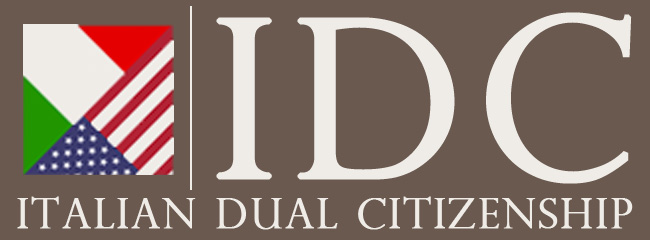ITALY AND THE HISTORY OF OPERA
AN EDUCATIONAL & INFORMATIONAL RESOURCE OUTLINING THE HISTORY OF OPERA IN ITALIAN CULTURE
Western opera traditions all trace back to Italy. These highly dramatic performances grew out of a very dramatic political landscape. The Italian Renaissance funded the burgeoning new style of play that paired high Greek drama with contemporary music. From the beginning, Italian opera married beauty and spectacle with deep feeling and commentary on the human condition. It was entertainment for the elite, a spectacle for the eye, the ear, and the heart. Even when the libretto is in French, English, German, or Russian, opera still owes its soul to Italy.
1597: Jacopo Peri composes Dafne, which is widely considered to be the first opera.
Oct. 6, 1600: The first full opera that has survived to this day, Peri’s Euridice, is written for a Medici wedding, demonstrating the origins of opera as a political as well as an artistic medium. Like most operas of its time, it is performed for the royal and ruling classes. This wouldn’t be the last time the Medici family’s patronage offered invaluable support to the art form.
March 2, 1647: The French court features an extravagant opera, Orfeo, one of the great Baroque operas. A new element joins the show, however, with the French’s addition of their own courtly performance art: ballet. It’s a combination that continues through to the 21st century. This work by Rossi is often confused with Monteverdi’s opera of the same name.
Jan. 19, 1674: Although it is still a form of entertainment for the elite, opera comes to a somewhat wider audience at the Paris Opera with the premiere of Alceste.
1683: About a hundred years after opera first appears in Italy, the British join in with the premiere of Venus and Adonis, broadly considered to be the first English opera.
May 2, 1692: Henry Purcell develops the next phase of the English take on opera with the semi-opera, which blends a sung score with spoken passages linking the songs together. Drawing from the works of Shakespeare, he creates The Fairy Queen, which premieres at the Queen’s Theatre in London.
May 1, 1769: Mozart‘s first full opera, La Finta Semplice, premieres, beginning a career that has left us with some of the most memorable and popular operas ever written. The vast majority of his work features Italian librettos, despite the fact that he wrote for Austrian audiences.
Sept. 30, 1791: Mozart’s final opera, Die Zauberflöte, a fantasy supposedly replete with Masonic imagery and references, premieres, bringing an end to the composer’s operatic career. He dies little more than two months later, on Dec. 5, 1791.
Nov. 20, 1805: Beethoven’s only opera, Fidelio, enjoys its first performance.
Jan. 25, 1817: Rossini’s La Cenerentola, a charming interpretation of the Cinderella fairy tale, premieres in Rome, where opera has continued to flourish throughout the heyday of the great Austrian composers like Mozart and Beethoven, who highlighted the brilliance of Italian opera abroad.
Dec. 26, 1830: Gaetano Donizetti premieres Anna Bolena, the plot of which is taken from English history. The premiere is in Milan, the story is English, and Italian opera makes high art of the high romance and tragedy.
Sept. 26, 1835: Donizetti’s Lucia di Lammermoor‘s famous mad scene includes the eerie sigh of a glass harmonica, using an uncommon instrument in Italy to push tradition and evoke a truly haunting sensation.
Dec. 9, 1836: The very first full Russian opera, Mikhail Ivanovich Glinka’s A Life for the Tsar, premieres in St. Petersburg.
March 11, 1851: Verdi‘s Rigoletto, based on Victor Hugo‘s novel Le Roi S’Amuse, premieres in Venice, one of the high points of the composer’s career.
Dec. 24, 1871: Verdi helps Cairo’s new opera house open in style with the premiere of his latest opera, Aida.
March 2, 1875: Bizet’s Carmen opens in Paris at the Opéra-Comique, creating immediate scandal and immortalizing some of the most well-known opera arias in history. Although it was originally meant to belong to the comique genre, revisions transformed it into a grand tragedy.
Aug. 13, 1876: One of the most famous (and infamous) operas ever performed, Wagner’s Der Ring des Nibelungen, also called the Ring cycle, sees its first full performance as a united show. Although Wagner did not use Italian in these four pieces and many Italian opera fans don’t particularly enjoy his work, he still abides by the traditional opera themes, styles, and grandiosity that began in Italy. Opera fans will likely never forgive Wagner for creating the association of classic opera with women in large, horned helmets, however.
Jan. 23, 1881: Although it was first performed by students a year earlier, Pyotr Il’ych Tchaikovsky‘s Yevgeny Onegin enjoys its official premiere in Moscow. Although western audiences are usually more familiar with Tchaikovsky’s ballets, his Russian operas made a tremendous impact and are enjoying a resurgence today.
May 21, 1892: Ruggero Leoncavallo Pagliacci premieres in Milan. Leoncavallo based this opera on a true story; he and his contemporaries used realistically tragic stories to create the foundation for our modern performance tradition.
Feb. 1, 1896: Puccini sees the premiere of his masterpiece La Bohème, one of the most popular operas ever written, and in the next eight years, he also premieres Tosca and Madama Butterfly.
May 24, 1918: Budapest hosts the premiere of Béla Bartók‘s opera Bluebeard’s Castle, a ghostly fairy tale with the blend of political and emotional undertones established in the very earliest Italian traditions.
April 25, 1926: After several years without a single opera premiere, Puccini’s final opera, Turandot, debuts. Unfortunately, Puccini died before he could complete it, and the project is left to Franco Alfano to finish. During its premiere at La Scala, the conductor, Arturo Toscaninni, brings the opera to a stop immediately after the death of Liù, when Puccini’s completed score concludes.
Oct. 10, 1935: George and Ira Gershwin‘s Porgy and Bess premieres in New York. Today, this opera is considered not only the Gershwins’ greatest masterpiece but also the quintessential American contribution to the international Italian opera tradition.
June 8, 1953: Continuing the tradition of linking rulers and monarchs with grand performances, Britten premieres his opera Gloriana at the Royal Opera House in Covent Garden. The opera’s main character is Queen Elizabeth I of England, and Britten clearly wrote the opera to celebrate the coronation of Queen Elizabeth II of England that same year.
Oct. 22, 1987: Nixon in China by John Adams premieres, once again linking opera to not only spectacle and fine art but also politics and social commentary.
This page was last updated by Marco Permunian
Additional Resources:
- Italian citizenship jure sanguinis Canada
- Dual Italian citizenship requirements
- Getting an Italian passport
- Italian citizenship marriage
- Italian citizenship by marriage South Africa
- Italian dual citizenship 1948 rule
- Italian citizenship jure sanguinis UK
- Benefits of Italian citizenship
- How to apply for Italian citizenship
- Italian citizenship jure sanguinis Australia
- Italian citizenship jure sanguinis Brazil, Argentina and South America
- Italian citizenship by descent
- How to become an Italian citizen
- Becoming an Italian citizen through grandparents


